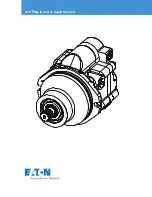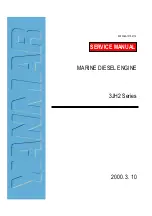
Engine Description
Teledyne Continental Motors, Inc.
TM
OIL BY-PASS FLOW
PLUG
OIL BY-PASS
VALVE
PLUG
OIL TEMP.
PORT
OIL FLOW BACK
TO ENGINE
OIL PRESSURE PORT
OIL FLOW OUT
TO EXTERNAL
OIL COOLER
OUT
Figure 2-12.
Oil Cooler Adapter
2-2.6. Ignition System
The Ignition System consists of the high voltage harness and spark plugs. The high
voltage harness, constructed of a lightweight flexible silicone coated cable, consists of
two spark plug wire leads per cylinder and two spark plugs per cylinder for a total of 8
leads and 8 spark plugs.
The FADEC System employs a waste spark ignition system. In this type of ignition, each
cylinder’s spark plugs are fired twice per engine cycle - once on the compression stroke
and again on the exhaust stroke.
There are two Electronic Control Units (ECUs) on an IOF-240 engine. Each ECU
controls the ignition spark for two engine cylinders - ECU 1 fires the top and bottom
spark plugs for Cylinders 1 & 2; ECU 2 fires the top & bottom spark plugs for Cylinders
3 & 4. The ECU control channel emits an ignition pulse through the high voltage harness
to fire the top spark plug on the compression stroke and the bottom spark plug on the
exhaust stroke for the opposing cylinder.
The high voltage harness carries high voltage energy from the ECU spark towers to the
engine spark plugs. The spark tower pair is connected to opposite ends of one of the
ECU’s coil packs located in the upper portion of the ECU. Each coil pack generates a
high voltage pulse for two spark plug towers. One tower fires a positive polarity pulse
while the other tower of the same coil fires a negative polarity pulse.
The ignition spark is timed to the engine’s crankshaft position. The timing is variable
throughout the engine’s operating range and is dependent upon the engine load
conditions. The spark intensity is varied with respect to engine load.
2-14
IOF-240 Series Engine Maintenance Manual
Change 1
31 August 2007
















































